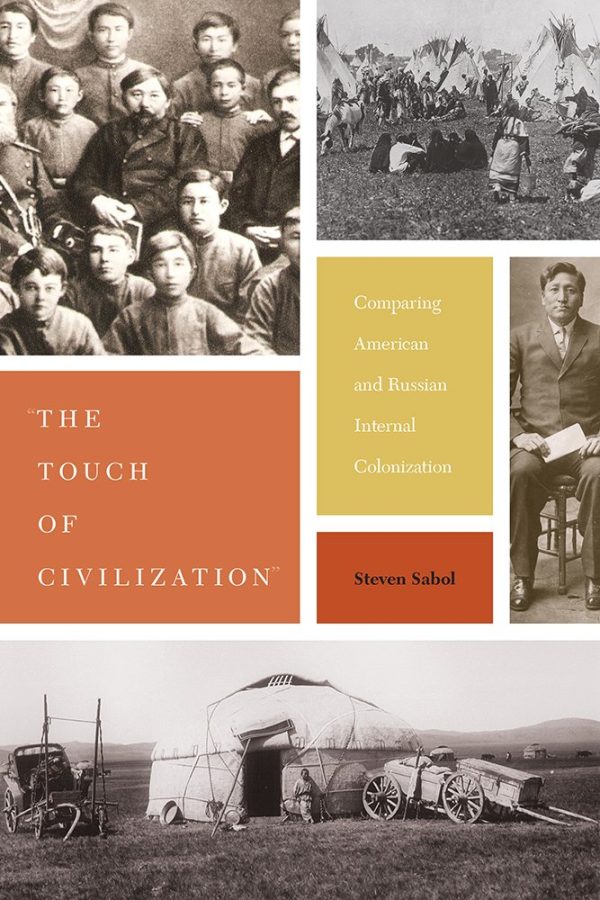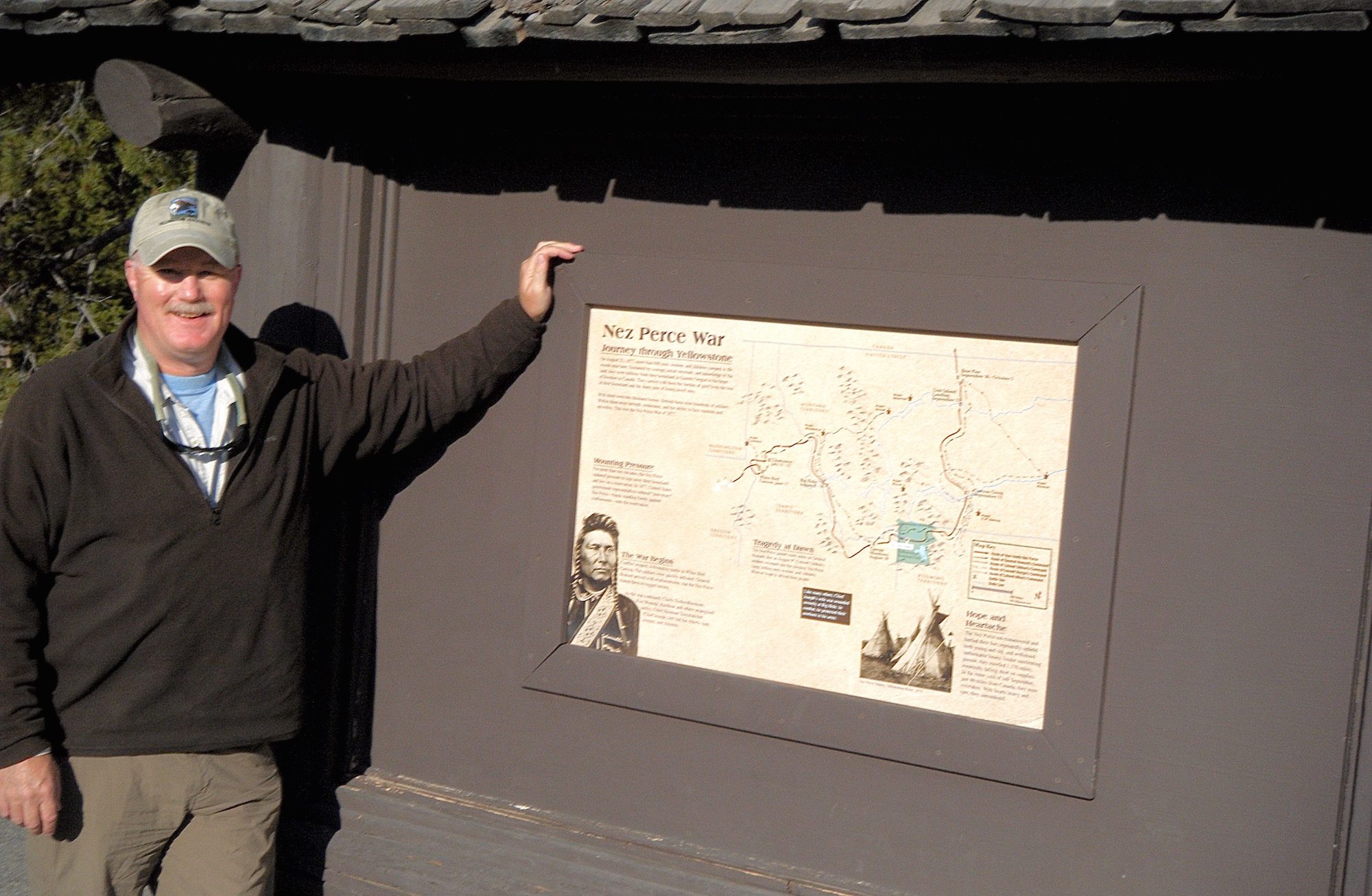Historian Compares Treatment of Nomadic People by U.S., Russia

As UNC Charlotte historian Steven Sabol sees it, his new book is a happy coincidence of fly-fishing and history.
During a 2006 fishing trip to trout-filled Nez Perce Creek in Yellowstone National Park, Sabol spied a sign with tantalizing details about the flight of the Nez Perce through the park in the 19th century. Sabol’s thoughts kept returning to the sign, as he speculated about the fate of Chief Joseph and the Nez Perce people, who were under pursuit by the U.S. Army.
This simple sign set Sabol on a decade-long comparative history journey that has culminated in “The Touch of Civilization”: Comparing American and Russian Internal Colonization (University Press of Colorado.)
Through his comparison of two powerful and rapidly expanding societies and their treatment of nomadic people during a similar time period, Sabol explores a fundamental question: Was the United States an empire in the 19th century?
“When we think of the 19th century and the great empires, we think of Great Britain; we think of the overseas empires – the Germans in Africa, the French in Southeast Asia, the British around the world,” he says. “But, because Russia and the United States expanded into contiguous territory, rather than taking their empires overseas, they have been basically ignored in previous research.”
His comparative focus takes the research in a new direction, suggesting that Russia and the United States followed similar practices and formed similar stereotypical attitudes toward indigenous people as those found among the British, French, German and other conquerors. Russia and the U.S. saw native people as foreign to their civilizations and cultures. Yet, they did not view themselves as conquering empires, and neither did others.
“What I wanted to try to understand is why these two great empires, Russia and the U.S., that are expanding at the same rate with the same attitudes and perceptions, tend to be neglected in the research,” Sabol says. “Then, what were the consequences of this for the two different indigenous people?”
Sabol uncovered similarities between the views of Americans in the 19th century toward Native Americans and the attitudes of Russians toward the empire’s minorities living in central Asia and the Caucasus. The book focuses specifically on the Sioux Native Americans, and the Kazakhs, a people largely inhabiting Kazakhstan. Both were nomadic people, which meant they displayed little respect for directives or orders from others, and they stayed on the move.
“So, the Sioux and the Kazakhs were the two most powerful forces that the Americans and the Russians encountered as part of their expansions, and they caused some of the most serious obstacles to the continued expansions,” Sabol says.
While his research uncovered similarities, Sabol also found significant differences. The U.S. confined Native Americans on reservations to segregate them from a growing white population. They viewed the Native Americans’ ways as inferior, so they tried to assimilate them by bringing Catholic and Protestant religions to the reservations, while obliterating their languages and culture.
 Comparatively, the Russians attempted to limit mobility by telling the nomads not to cross certain boundaries and enforcing those orders, but they did not attempt to contain them on reservations. The Russians also did not attempt to force religious conversion on the Kazakhs, who were Muslim, and did not force them to speak Russian.
Comparatively, the Russians attempted to limit mobility by telling the nomads not to cross certain boundaries and enforcing those orders, but they did not attempt to contain them on reservations. The Russians also did not attempt to force religious conversion on the Kazakhs, who were Muslim, and did not force them to speak Russian.
As he shaped his book, Sabol drew upon his extensive knowledge of Russian history, honed in part from time he spent in Kazakhstan conducting research for his doctoral dissertation. In contrast, he initially lacked the same deep understanding of U.S. history, particularly about Native Americans. He read everything he could on the American West in the 19th century and consulted with colleagues at UNC Charlotte and elsewhere.
“This book took 10 years to research and write, of which I would say the first five or six were spent just reading, trying to get the same level of balance in the American story that I already had for the Russian Kazakhs’ story because of my earlier research,” he says.
He spent time in the National Archives at Kansas City, sifting through the records from the Great Plains reservations and U.S. Army that are archived there. He traveled back to Kazakhstan to access its central archives to validate some of his points. As the story evolved, he presented snippets in papers and talks, in part to gain feedback.
One article, published in 2012 in the Western Historical Quarterly, formed the rock solid foundation for the book. The essay won the Arrell M. Gibson Award, judged best essay of the year on the history of Native Americans.
Sabol infuses the knowledge he gained through his extensive research and writing into his teaching in part by introducing the idea of comparison as a tool that a student or historian can use to research a given topic.
“One of the things that I try to do is get students to expand their literature,” he says. “If you’re going to study the Nazis, why just read about the Nazis? Perhaps read about comparative interpretations about fascism in general or nationalism, for example. I’m trying to get students to move beyond that laser focus they’ll have on a topic and expand what they’re reading to try and see it through a different telescope. Through that different lens, we are able to see uniqueness.”
Words: Hannah Rayburn, CLAS Intern | Images: Courtesy of Steven Sabol